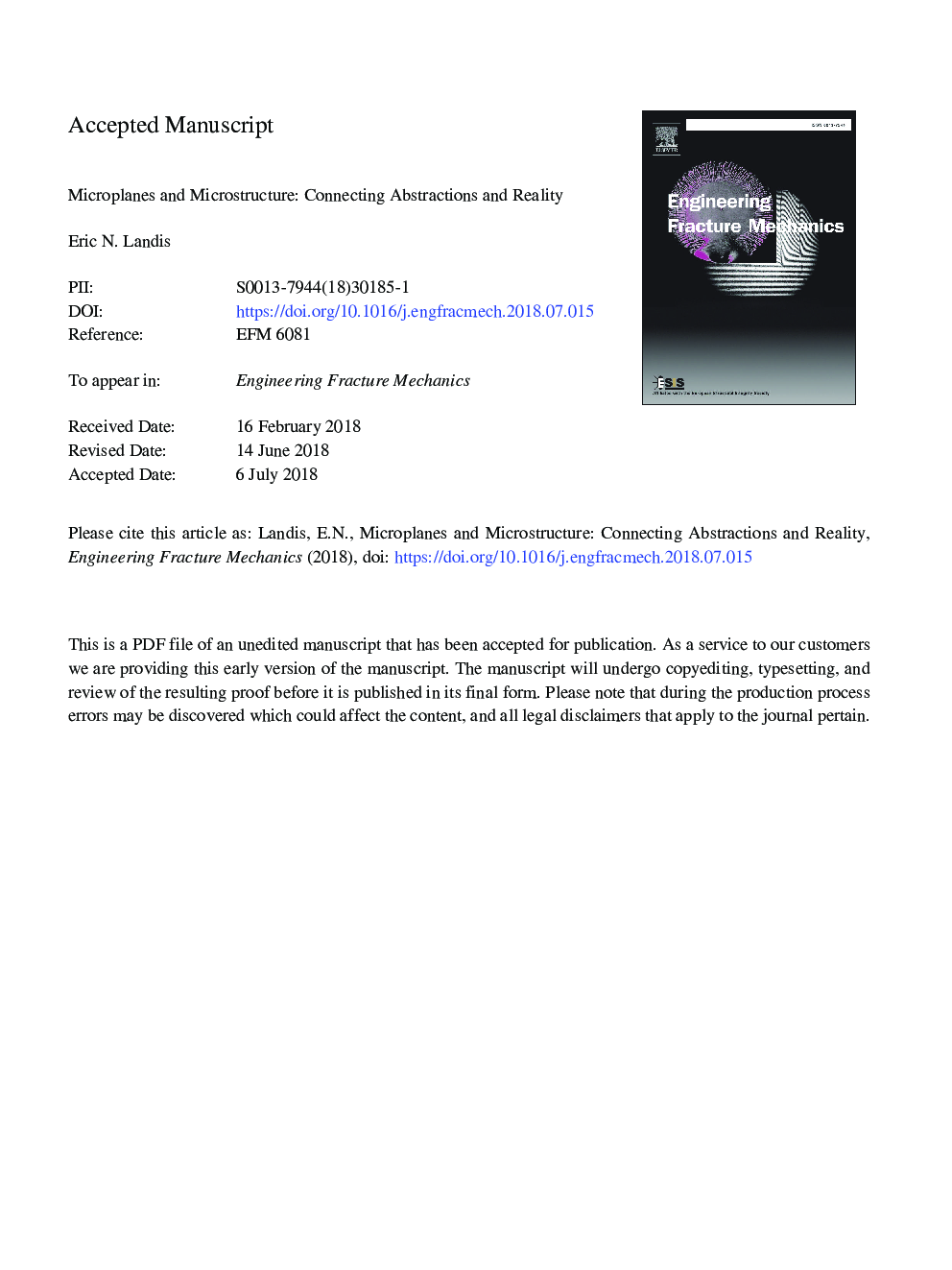| Article ID | Journal | Published Year | Pages | File Type |
|---|---|---|---|---|
| 7168586 | Engineering Fracture Mechanics | 2018 | 25 Pages |
Abstract
The practical problem of predicting the structural performance of concrete has led to an array of innovative models and modeling approaches, spawned primarily due to limitations of traditional fracture mechanics to properly capture quasi-brittle behavior. The different approaches, ranging from modified continua to discrete elements to hybrid schemes must all, by necessity, balance the incorporation of material features that dictate behavior with the computational tractability that allow one to solve practical problems. Regardless if one uses a continuum or a discrete representation, the key to success is an appropriate abstraction of physical microstructure (e.g. heterogeneities and microcracks) and micromechanical pehenomena. The case is made here that while we need to employ the abstract representations of continuum-based models to solve practical problems, we will be better served by moving our simulation tools towards material representations that are better tied to the physical microstructure and the micromechanical phenomena that produce quasi-brittle behavior. Some experimental examinations of these micromechanical phenomena are presented in the context of how they may be incorporated into computational tools.
Related Topics
Physical Sciences and Engineering
Engineering
Mechanical Engineering
Authors
Eric N. Landis,
